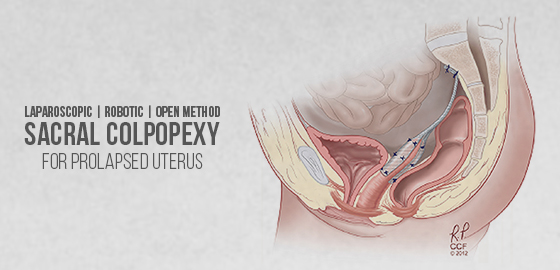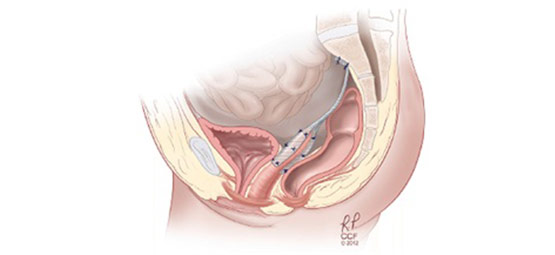

Sacral Colpopexy is a procedure performed to correct the downward descent of the pelvic organs in women. As the name suggests it is sacral ( sacral bone- tail bone ) attachment (Pexy)of the vagina( colpo).
The descent of the vaginal cavity with or without the other pelvic organs usually happens when the muscles and ligaments holding the organs in place are weakened.
This can happen if :-
The uterus and vagina shrinks(atrophied) after menopause, or by Multiple childbirths making the pelvis floor muscles weak to hold the vagina in place, or In case of the Hysterectomy ( removal of the uterus) when the ligaments holding up that vagina are not available, as a part of Aging,increased intraabdominal pressures for prolonged duration
The prolapse of the pelvic organs is usually associated and complicated by prolapse of the intestine and the bladder along with the vaginal wall. The associated problems would be leakage of urine because of the pressure of the prolapsed vagina on the bladder neck region and also disturbed bowel movement if bowel is also involved.
The sacrocolpopexy is performed under general anaesthesia. It can be performed laparoscopically, Robotically or by open method. A piece of surgically used mesh strip is used to attach the upper end of vaginal and fixed to the sacrum( tail bone). This may be usually combined with repair of any other organ prolapse which can be done by repairing the vaginal wall.
The patient is shifted to recovery room with a catheter inserted into the bladder. The catheter is removed few hours after the procedure and is discharged after passing urine.
The results are instantaneous with quick return to work( 1 week) with robotic procedure though there may be a delay in return to work of about 4-6 weeks if done with open technique.
Post operatively patient is advised :-
As with any surgical procedure there may be complications involved in Sacrocolpopexy, which may include, bleeding during or after the procedure Infection requiring intravenous antibiotics Injury to the surrounding organs - bladder and intestines Post op painful urination or bowel disturbances unrelated to injury.
There are many other ways of management the prolapse of the pelvic organs in female such as Kegles pelvic exercises and placement of vaginal pessaries are to prevent the prolapse from coming down. Many studies have shown that the Sacrocolpopexy has the best results for the pelvis organ prolapse compared with all the other techniques.
Post surgery recovery is relatively early and patient is asked to follow up after a week for the sutures removal and wound inspection or if faced with any problems like, heavy bleeding through the vagina, fever with pain in the abdomen or vaginal region, difficulty in passing urine or passing stools. Resuming completely normal life style should be possible at about 6 weeks.